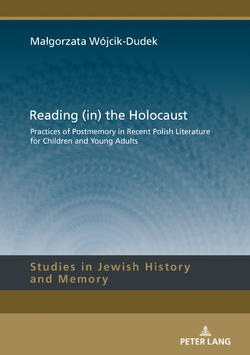Читать книгу Reading (in) the Holocaust - Malgorzata Wójcik-Dudek - Страница 14
На сайте Литреса книга снята с продажи.
The Polish School of Memory
ОглавлениеIn Poland, the memory of the Holocaust is shaped in young people chiefly at school. Without examining the role that history lessons play in this process,44 I will focus on the obligatory reading lists for Polish classes. The school canon of texts about the Holocaust has been comprehensively discussed by Sylwia Karolak.45 In her examination of opulent literary and didactic resources, Karolak distinguishes two moments of particular relevance to the presence of writings about the Holocaust in Polish language education. One of them is 1947, when Seweryna Szmaglewska’s Dymy nad Birkenau (Smoke over Birkenau) was put on the obligatory reading list for primary schools as the first literary text about the Holocaust. The book had a long and powerful formative impact on the post-Holocaust imaginary of the following generations of Poles. The other crucial moment came in 1991, when the inclusion 77777of Hanna Krall’s Zdążyć przed Panem Bogiem (To Outwit God) on the reading list proved to be the last essential change in the school canon. Karolak additionally enumerates a few minor turning points marked by the addition of new titles to the list, such as Zofia Nałkowska’s Medaliony (Medallions) in 1950, Tadeusz Borowski’s Auschwitz short stories in 1972, Jerzy Ficowski’s poems in 1982, and Leopold Buczkowski’s Czarny potok (Black Torrent) alongside Janusz Korczak’s Pamiętnik (Ghetto Diary) in 1984.46
Interestingly, Karolak’s exploration of the “scholastic” history of literature about the Holocaust concludes with the observation that until 1991 there hardly was any tolerably fixed Polish canon of texts about the Holocaust, and that the reasons for this failure of canonisation processes are to be attributed to combined ←24 | 25→political and social factors.47 This would suggest that after 1991 a canon of texts about the Holocaust was eventually forged.
In another study, Agnieszka Rypel analyses the topos of the stranger/foreigner in Polish language textbooks and notices that the ethnic identity of writers (actually not only those of Jewish descent) was long ignored in educational policy: “Paradoxical though it may sound, the vision of an ethnically homogenous Poland […] which was forged in the interwar period to tout the Polish nation as the only creative agent was actually sustained under the People’s Republic of Poland and still holds sway today. Polish textbooks frame the great aristocratic families (e.g. the Wiśniowieckis and the Czartoryskis) as Polish, obscuring their Ruthenian or Lithuanian background. The same strategy is applied to German bourgeois families, therein Cracow-based printers. […] Textbooks for primary schools and now for junior secondary schools as well are very careful not to highlight the contributions of Jews or people of Jewish origin to Polish culture. Many generations of students know Bolesław Leśmian, Antoni Słonimski, Julian Tuwim and even Janusz Korczak as writers, but are entirely ignorant of their ethnic background. In and of itself, this might not be very controversial, were it not for the fact that the contributions of people of Polish origin to the culture and scholarship of other nations are at the same time propagandistically spotlighted.”48
Rypel also points out that, interestingly, while information about the descent of an author or an artist may be included in the textbook, it tends to be so implicit that students can easily miss it; for example, Bruno Schulz’s biographical note mentions that he was shot dead in the ghetto, and Anna Frailich’s says that she left Poland in 1969.49 Rypel registers positive changes with satisfaction, noticing that although textbooks still stress religious devotion as the primary feature of the Jewish nation or community, they no longer perpetuate many other stereotypical features of the Jew.50
←25 | 26→
